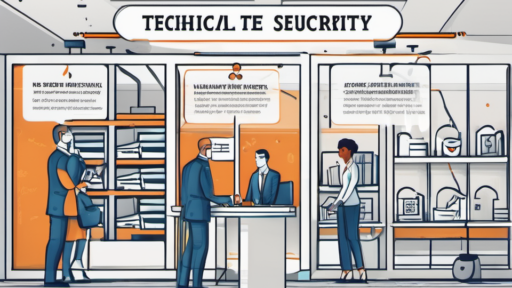Imagine a world where your business is safe from any threat, no matter how sophisticated. Sounds like a fantasy, right? But what if I told you this isn’t just a dream, but a very achievable reality with the right security strategy. The cybersecurity landscape is constantly evolving, and staying ahead of the curve is vital for businesses of all sizes. This means ditching the old ways of thinking and embracing new solutions for future-proofing your cybersecurity in today’s volatile landscape. Ready to unlock a new level of protection? Let’s dive into the future!
Embracing the Future of Security
We’re entering an era of unprecedented digital innovation. From the rise of cloud computing and artificial intelligence to the interconnectedness of the Internet of Things (IoT), the opportunities for business are incredible, but so are the vulnerabilities. The time is now to take charge of your digital security and not just react to threats, but predict and proactively defend against them.
Rethinking Security Paradigms
Traditional security solutions are like trying to build a fence around a rapidly expanding city. You’re playing catch-up, and threats can slip through the gaps. This is why we must shift our approach from perimeter-based defense to a comprehensive, integrated, and adaptive security framework. It’s about securing your entire business ecosystem, from the edge of your network to the core of your applications and beyond.
Leveraging AI & Automation
One of the most potent weapons in the modern security arsenal is artificial intelligence. AI-powered systems can analyze vast amounts of data, identify patterns, and predict threats in real time, leaving your IT team focused on critical issues. Imagine a security system that constantly learns, adapts, and anticipates attacks before they happen – that’s the power of AI. Beyond just detection, AI can automate responses to threats, proactively blocking malicious activity and streamlining your incident response process. This not only saves you time and resources, but helps ensure a rapid and effective response.
Navigating the Cloud
Cloud computing has revolutionized the way businesses operate, but it also brings a whole new set of security considerations. Cloud security isn’t just about finding the right vendor – it’s about understanding how the cloud operates and how to manage security across your hybrid infrastructure.
The Shift to Cloud-Native Security
Security should be integrated directly into your cloud platform, not bolted on as an afterthought. Look for vendors offering cloud-native security tools that provide visibility and control across your cloud environment. These solutions leverage the same scalability, elasticity, and agility of the cloud itself, adapting to your needs and helping you stay one step ahead.
Securing Your Data in the Cloud
Data is the lifeblood of any business, especially in the cloud. Cloud data security is paramount, and you need solutions that are built with data protection in mind. This means understanding the nuances of cloud storage options, implementing encryption measures, and implementing rigorous access control protocols to safeguard your sensitive information.
Embracing a Zero Trust Model
Zero trust is no longer a buzzword; it’s a fundamental principle that will reshape security in the years to come. Gone are the days of automatically trusting everyone inside your network. A zero-trust architecture operates on the assumption that no user or device should be trusted implicitly, regardless of location.
Verifying Every Access Request
In the zero-trust model, every access request, whether from inside or outside your network, must be verified. Think of it like a security guard at the gate of your castle, meticulously checking each person’s credentials and intent before granting them entry. This includes applying granular controls to ensure that only authorized users can access specific applications, resources, and data, even within your own network.
Micro-Segmentation for Enhanced Security
Breaking down your network into smaller, more manageable segments through micro-segmentation allows for stricter access control. This approach isolates applications, data, and user environments, ensuring that a breach in one segment does not affect the rest. It’s like dividing your castle into different sections, with each section having its own defenses and access protocols. This creates a strong layer of defense, limiting the damage if a single part of your network is compromised.
Building a Culture of Cybersecurity
The most advanced technologies are meaningless without the right people. Building a culture of security across your organization is vital for long-term success.
Investing in Your Security Team
Empowering your IT team with the training, tools, and resources they need to effectively address evolving threats is essential. Invest in ongoing education and certifications to equip them with the latest security skills. Furthermore, foster a security-conscious mindset by incorporating cybersecurity into your daily routines.
From Top to Bottom
Cybersecurity awareness training for everyone in your organization, from the CEO to the entry-level employee, is critical for success. Make cybersecurity part of your overall company culture, so that every individual is aware of their role in protecting the organization. It’s like teaching everyone in your village how to spot a smoke signal and know what to do in case of fire.
Key Takeaways:
- Stay Ahead: The future of security is about constant adaptation and innovation.
- Think Holistically: Security isn’t just about protecting the perimeter anymore.
- Leverage AI: AI is the future, and it’s changing how we defend ourselves against attacks.
- Embrace the Cloud: Cloud-native security is vital for securing your business.
- Zero Trust is Essential: Trust no one, verify every access.
- People Power: Investing in your team and fostering a culture of cybersecurity is key.






